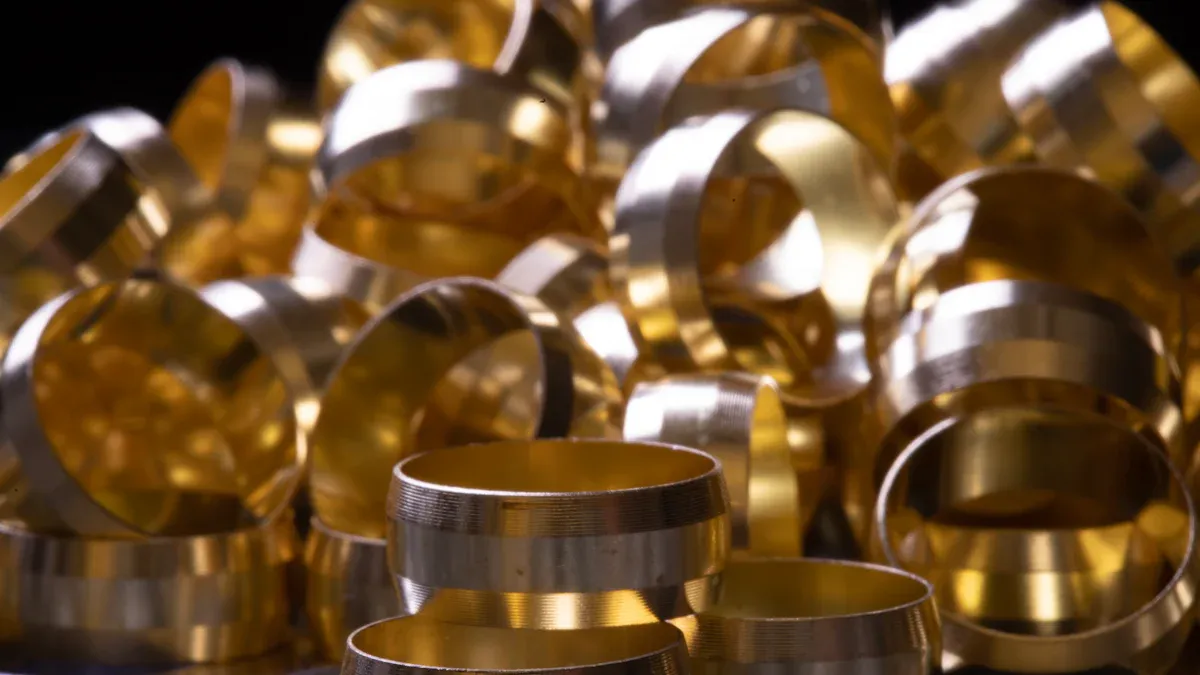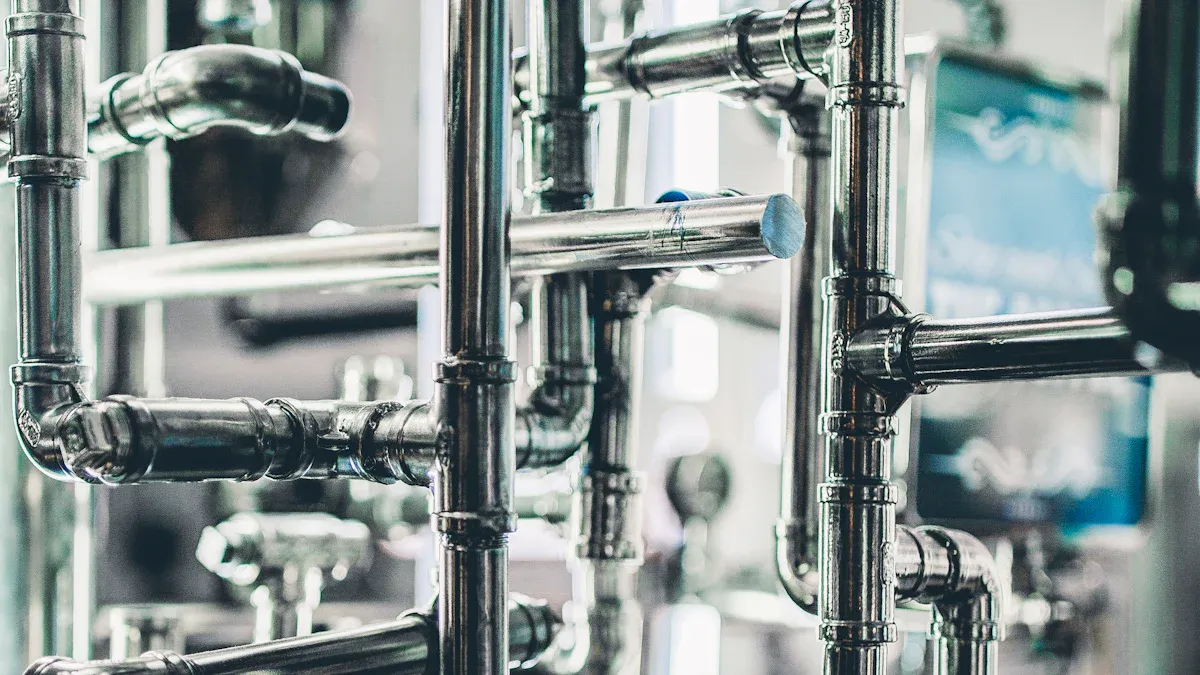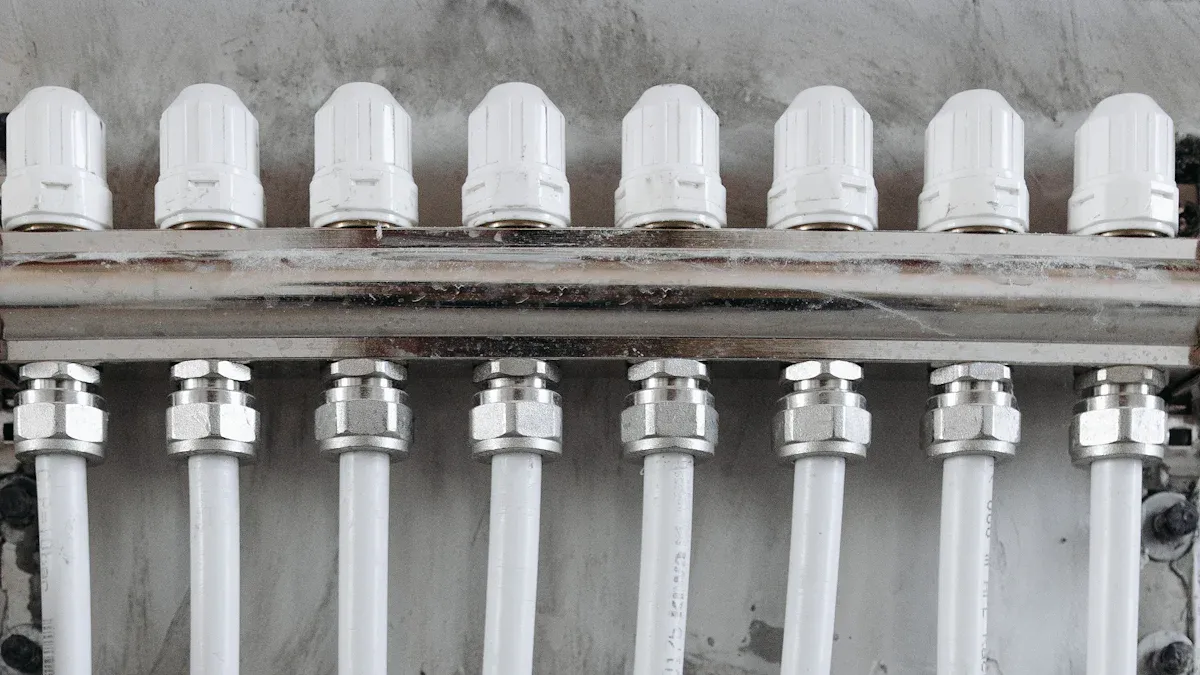
Compression fitting technology offers a direct answer to rising compliance demands across Europe.
- Recent trends show that stricter safety and environmental standards drive businesses to seek reliable, leak-proof connections.
- Advances in precision engineering, coupled with the push for sustainable practices, make these fittings essential for modern pipework.
- Industries benefit from easy installation and reduced risk of leaks.
Key Takeaways
- Compression fittings help businesses meet the 2025 EU pipework standards by offering easy installation, reliable sealing, and compliance with strict safety and environmental rules.
- Using premium compression fittings reduces leaks, lowers safety risks, and cuts downtime, saving companies significant costs over time despite a higher initial price.
- These fittings support future-ready pipework with durable, eco-friendly materials and smart technology, ensuring long-term system reliability and compliance.
Compression Fitting Solutions for 2025 EU Pipework Standards

Meeting Key Compliance Requirements
The 2025 EU pipework standards introduce stricter demands for safety, environmental responsibility, and system reliability. Compression fitting solutions address these requirements through several technical advantages:
- The threaded design of compression fittings allows for easy assembly and disassembly. Installers do not need extra sealing materials, which simplifies both installation and maintenance.
- Advanced sealing mechanisms provide a higher level of reliability. These features reduce the risk of leaks and support compliance with new regulations.
- Manufacturers use sustainable and durable materials such as brass and stainless steel. These materials meet the EU’s environmental and longevity requirements.
- Some compression fittings now include smart technologies, such as IoT sensors. These sensors enable real-time monitoring of pipe conditions, which helps maintain system integrity and supports proactive maintenance.
- Robust construction and versatile designs reduce installation complexity. Installers can complete projects faster and with fewer errors.
- HDPE compression fittings offer user-friendly designs. Installers do not need specialized tools, which further simplifies compliance.
Tip: Choosing compression fittings with these features can help companies meet the 2025 EU standards more efficiently and with less risk.
Addressing Installation and Safety Challenges
Safety and installation efficiency remain top priorities for businesses adapting to new regulations. Compression fitting technology directly addresses these challenges. Industry data shows that nearly 40% of hydraulic system failures originate from hose fittings. These failures often lead to unplanned downtime and safety incidents, with the average cost of a safety incident exceeding $45,000. Premium compression fittings, while carrying a 20-40% higher initial cost, significantly reduce failure frequency and severity. This results in fewer safety incidents and lower overall costs.
The following table highlights the impact of premium compression fittings on safety and operational efficiency:
| Metric / Aspect | Standard Components | Premium Compression Fittings |
|---|---|---|
| Downtime Reduction | Baseline | 35% reduction in downtime costs |
| Monthly Downtime (Forestry) | 10-15 hours (avg. 12 hours used) | Reduced to approx. 7.8 hours (35% less) |
| Annual Downtime Cost (Forestry) | $172,800 | $112,320 |
| Annual Savings | N/A | $60,480 |
| Failure Rate | 35-50% higher failure frequency | Significantly reduced failure rates |
| Safety Incidents Risk | Higher risk of catastrophic failures | Reduced risk of catastrophic failures and safety hazards |
| Cost Premium | Lower initial purchase price | 20-40% higher initial cost |
Proper installation and adherence to pressure ratings maximize these safety benefits. Companies that invest in premium compression fittings experience fewer catastrophic failures and a safer work environment.
Ensuring Lead-Free and Contamination-Free Connections
The 2025 EU standards place a strong emphasis on water quality and contamination control. Compression fitting products undergo rigorous laboratory testing and certification to ensure they meet these requirements.
- The ISO 8573.1 standard classifies compressed air contaminants and sets strict quality classes. This ensures that systems using compression fittings maintain clean and safe air or water flow.
- ISO 12500 defines testing methods for compressed air filters and treatment equipment. This standard helps guarantee that fittings do not introduce contaminants into sensitive systems.
- In food processing, compressed air must meet dryness standards such as ISO 8573.1 Quality Class 2, which prevents microbial growth.
- Oil contamination limits are extremely low. Filters must reduce oil content to 0.007 ppm or less, and activated carbon filters can lower oil vapor to 0.003 ppm.
- End users select compression fittings based on compliance with these standards to guarantee contamination control.
The following table summarizes key certification data for lead-free compliance:
| Aspect | Description |
|---|---|
| Certification Standard | NSF/ANSI 61 Standard, Section 8 for brass plumbing components |
| Focus | Lead leaching limits and testing protocols |
| Lead Limit | Below 15 μg/L (5 μg/L after 2012) in test water after normalization |
| Lead Content in Product | Less than 8% lead by weight as per US law |
| Test Protocol | Exposure to synthetic extraction waters at pH 5 and pH 10 |
| Product Types Covered | Backflow preventers, pressure regulators, compression fittings, and more |
| Purpose | Certify that fittings do not leach harmful lead levels |
These certifications and testing protocols ensure that compression fittings meet the highest standards for contamination control. Companies can trust that their systems remain safe and compliant with the latest EU regulations.
Practical Benefits of Compression Fitting for Installers and Businesses

Time and Cost Savings
Installers and businesses experience significant time and cost savings when they choose compression fitting solutions. These fittings eliminate the need for welding or threading, which reduces both labor and material expenses. Installers can complete projects faster because the installation process is simpler and requires fewer specialized tools.
- Compression fittings reduce the number of connections, which minimizes potential leak points and maintenance needs.
- They deliver reliable sealing performance, even in demanding environments such as oil and gas.
- Simplified installation and maintenance routines help businesses save on operational costs.
The following table highlights comparative financial statistics that demonstrate these savings:
| Cost Category | Compression Fitting Group | Control Group (Traditional Methods) | Intergroup Difference | Percentage Reduction |
|---|---|---|---|---|
| Health Service Cost ($) | 3,616 | 14,527 | 10,963 | 75% |
| Patient Cost ($) | 1,356 | 11,856 | 10,521 | 89% |
| Total Cost ($) | 4,972 | 26,382 | 21,483 | 81% |
Note: While initial costs may be higher, ongoing maintenance and repair costs drop significantly over time.
Lower Risk of Non-Compliance and Penalties
Businesses face strict regulations under the 2025 EU pipework standards. Compression fitting technology helps companies avoid costly penalties by ensuring reliable, leak-free connections. These fittings undergo rigorous testing and certification, which supports compliance with safety and contamination standards. Installers benefit from fewer installation errors, reducing the risk of non-compliance and associated fines.
Future-Proofing Pipework Systems
The global market for compression fitting continues to grow, driven by urban infrastructure development and the need for efficient, compact piping solutions. Advancements in material technology enhance durability and corrosion resistance, making these fittings suitable for future demands.
- The market value has reached approximately USD 2 billion, with strong growth in both mature and emerging regions.
- Innovations such as smart fittings with IoT integration support remote monitoring and predictive maintenance.
- Sustainable construction practices and eco-friendly materials position compression fittings as essential for long-term, secure, and efficient pipework systems.
Long-term studies confirm that these fittings maintain watertightness and withstand high-pressure maintenance procedures, ensuring operational reliability for years.
Compression Fitting solutions help businesses meet the 2025 EU pipework standards. Installers trust these products for reliability and efficiency. Companies that adopt this technology achieve compliance and reduce operational risks. Choosing the right fittings supports long-term success in a changing regulatory environment.
FAQ
What makes compression fittings suitable for the 2025 EU pipework standards?
Compression fittings meet strict safety and environmental requirements. Manufacturers design them for easy installation, reliable sealing, and compliance with lead-free regulations.
Can installers use compression fittings for both new and existing pipework systems?
Installers can use compression fittings for retrofitting older systems or building new installations. These fittings adapt to various pipe materials and sizes.
How do compression fittings help reduce the risk of leaks?
Compression fittings use advanced sealing mechanisms. These mechanisms create tight, secure connections that minimize leak risks and support long-term system reliability.
Post time: Jun-30-2025
